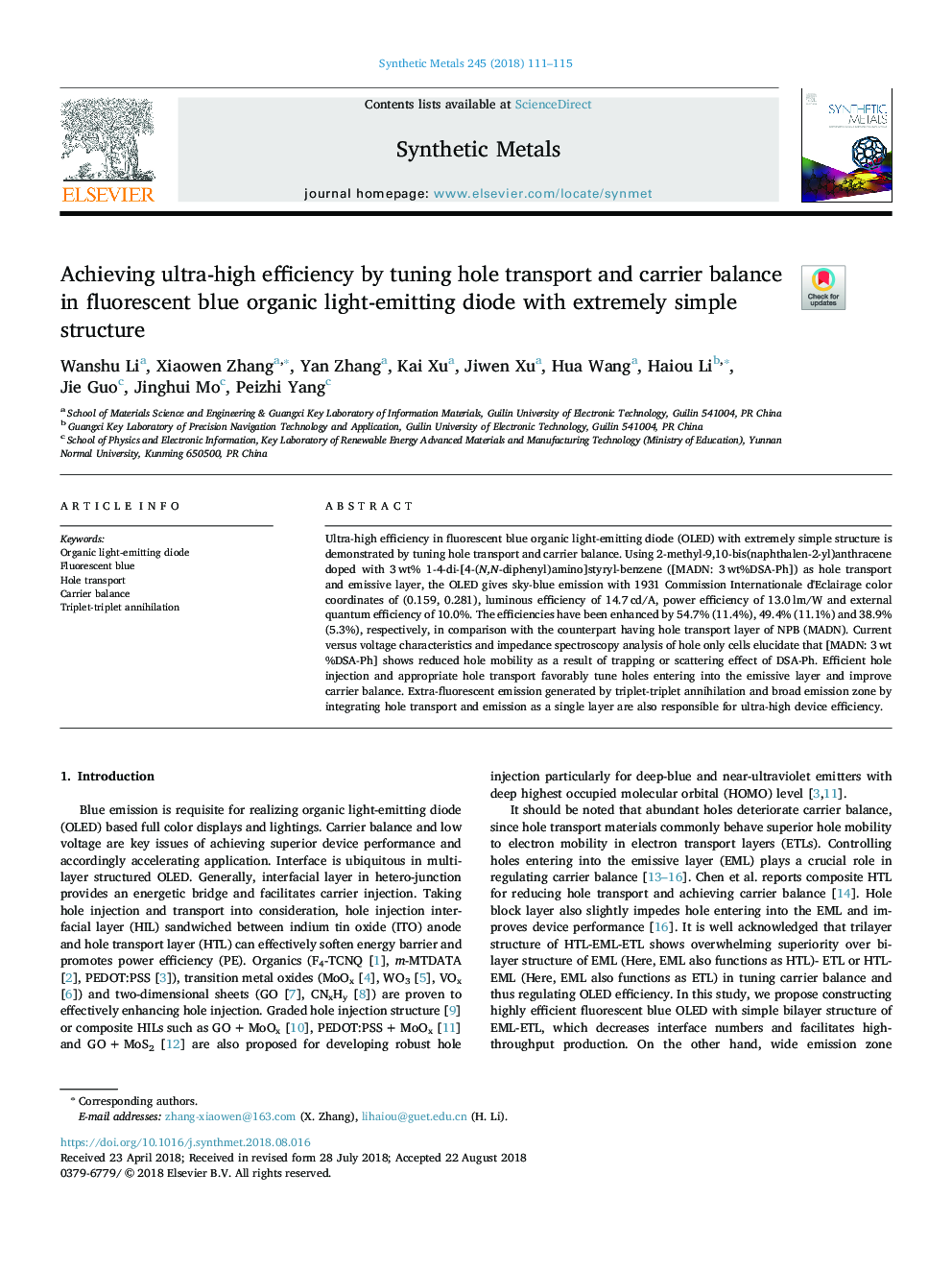| Article ID | Journal | Published Year | Pages | File Type |
|---|---|---|---|---|
| 9953495 | Synthetic Metals | 2018 | 5 Pages |
Abstract
Ultra-high efficiency in fluorescent blue organic light-emitting diode (OLED) with extremely simple structure is demonstrated by tuning hole transport and carrier balance. Using 2-methyl-9,10-bis(naphthalen-2-yl)anthracene doped with 3âwt% 1-4-di-[4-(N,N-diphenyl)amino]styryl-benzene ([MADN: 3âwt%DSA-Ph]) as hole transport and emissive layer, the OLED gives sky-blue emission with 1931 Commission Internationale d'Eclairage color coordinates of (0.159, 0.281), luminous efficiency of 14.7âcd/A, power efficiency of 13.0âlm/W and external quantum efficiency of 10.0%. The efficiencies have been enhanced by 54.7% (11.4%), 49.4% (11.1%) and 38.9% (5.3%), respectively, in comparison with the counterpart having hole transport layer of NPB (MADN). Current versus voltage characteristics and impedance spectroscopy analysis of hole only cells elucidate that [MADN: 3âwt%DSA-Ph] shows reduced hole mobility as a result of trapping or scattering effect of DSA-Ph. Efficient hole injection and appropriate hole transport favorably tune holes entering into the emissive layer and improve carrier balance. Extra-fluorescent emission generated by triplet-triplet annihilation and broad emission zone by integrating hole transport and emission as a single layer are also responsible for ultra-high device efficiency.
Related Topics
Physical Sciences and Engineering
Materials Science
Biomaterials
Authors
Wanshu Li, Xiaowen Zhang, Yan Zhang, Kai Xu, Jiwen Xu, Hua Wang, Haiou Li, Jie Guo, Jinghui Mo, Peizhi Yang,
